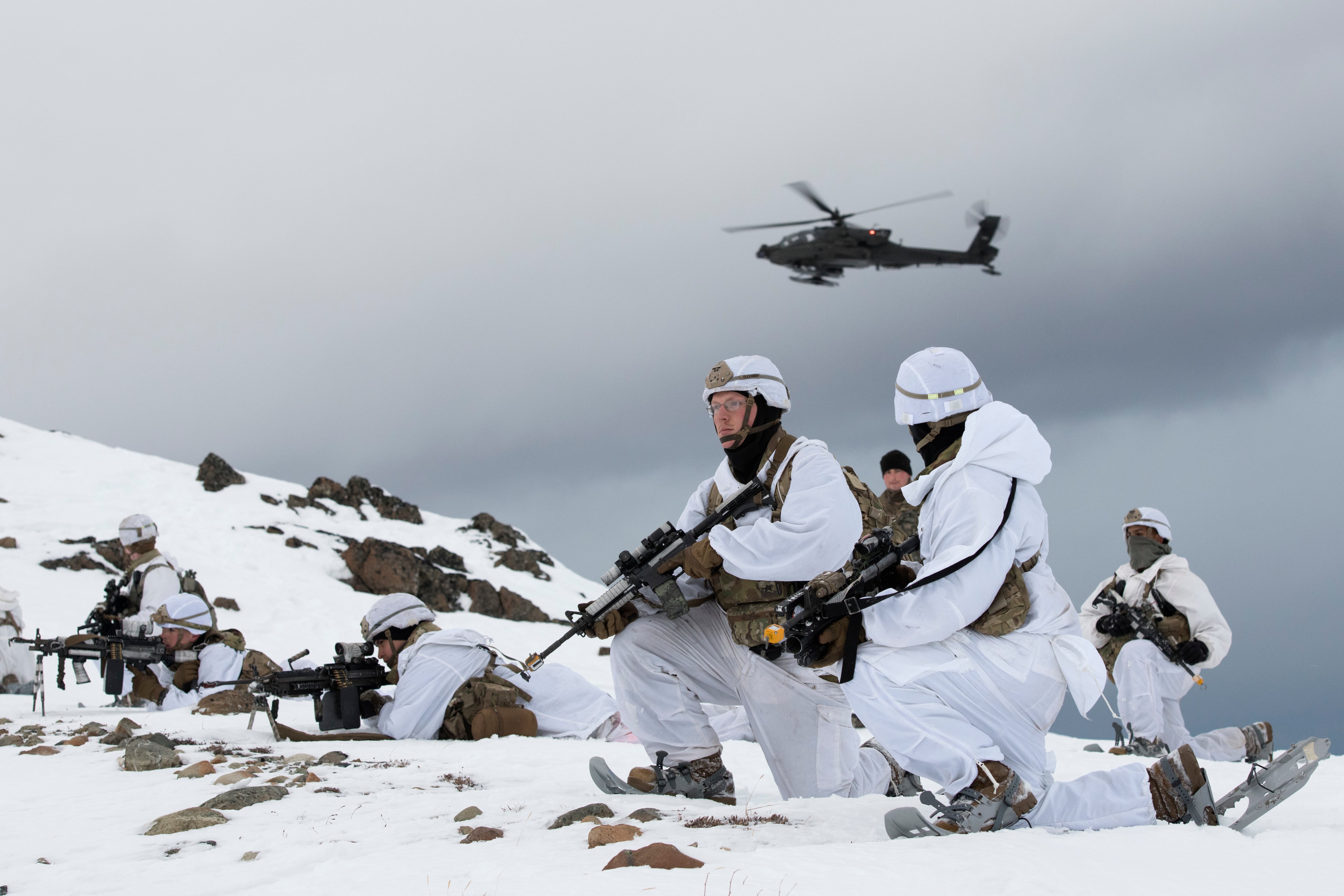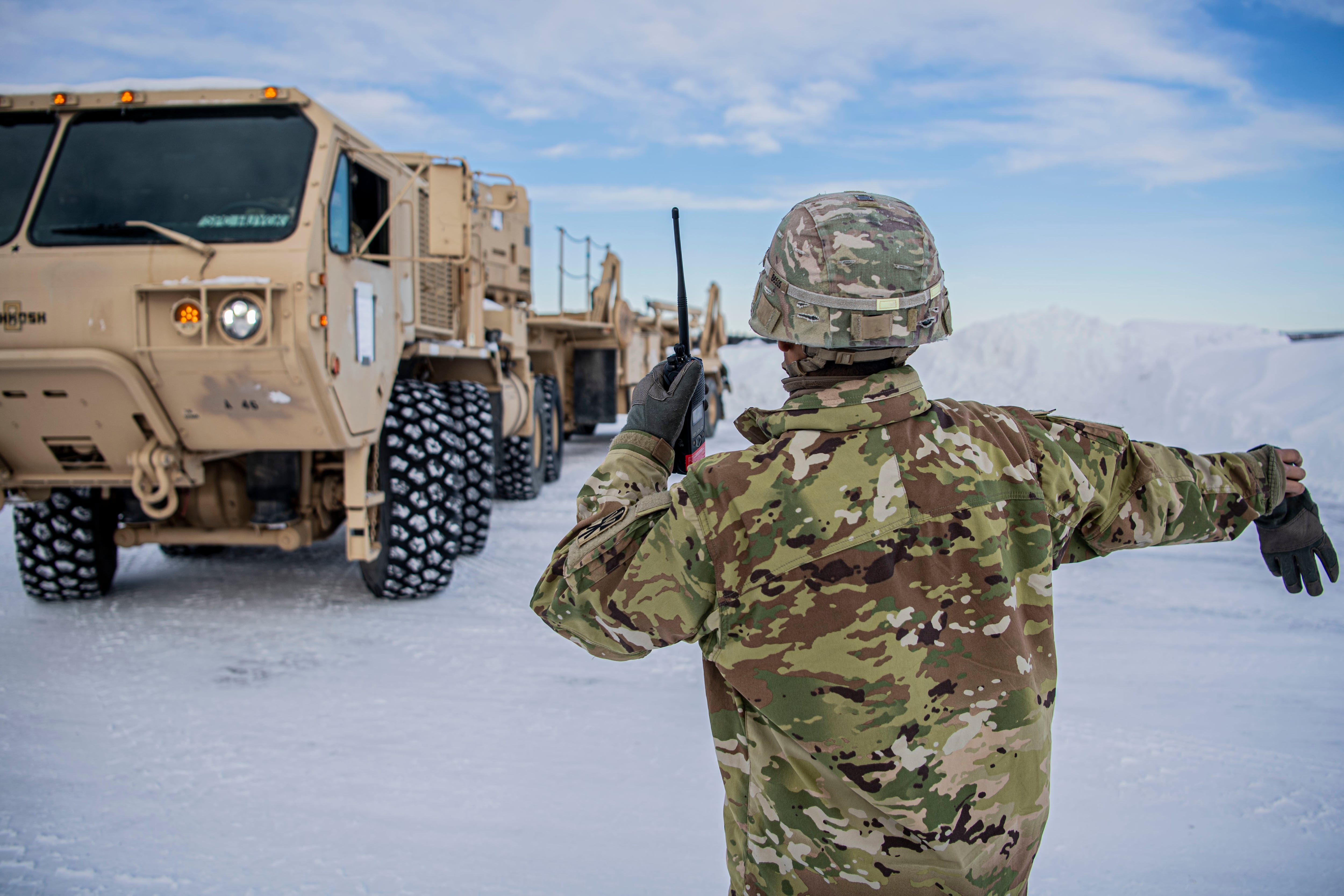The recent biennial, large-scale arctic warfighting exercise in Alaska that puts soldiers, airmen and a mix of the other services to the test defending the far north saw its own first –— air defense integration.
The U.S. Northern Command “Arctic Edge 2022″ exercise, the largest joint exercise held in Alaska, pushed about 1,000 U.S. troops from a combination of more than 35 units from both the United States and Canada in land, air and sea maneuvers in frigid temperatures and harsh conditions in late February and early March.
Army Times spoke with Maj. Stanton Jordan, with the 263rd Army Air and Missile Defense Command’s training and readiness authority, housed in the Army National Guard.
RELATED

For the first time at least in recent decades, commanders incorporated air defense and strike capabilities such as the AN/MPQ-64 Sentinel radar, the MIM-104 Patriot surface-to-air missile system and the AN/TWQ-1 Avenger Short-range Air Defense or SHORAD system, he said.
Jordan’s soldiers began planning and preparing for this event 18 months before it kicked off. Individual soldiers attended cold-weather training, returned to their unit to train other soldiers.
They scoured procedures and manuals to winterize their systems, installing arctic kits on the air defense platforms.
There were many equipment parts to get from the logistics side of the house, Jordan said.

Small things make a substantial difference when temperatures not only drop below zero but can hit -60 degrees Fahrenheit.
“Throughout this exercise, we’ve learned to make sure we have the correct fuel for the systems, the correct additives so hoses don’t freeze while rotating turrets,” Jordan said.
And, as many who’ve trained, lived or fought in the Arctic can recall, everything takes more time.
“We have to wait 30 minutes before bringing cold air into the system,” Jordan said. That’s to ensure that the cold won’t affect electronics within the platform, halting operations.
The air defenders took two battalions’ worth of SHORAD assets, such as Avengers and Sentinels. A single Patriot battalion and a brigade headquarters were brought to run it all.
That’s where commanders can get a clear picture because it’s within the brigade HQ that the systems “fuse” all operations together, Jordan said.
Using the assets isn’t new. These systems have been around a long time and used in real-world operations for years. But the freezing weather really tests the units’ fundamental skills, Jordan said.

This type of exercise provides a kind of “strategic asset,” Jordan said.
For soldiers out there maneuvering in the frozen tundra, they know that the skies above are covered by a crew of an estimated 300 Army air defenders.
Jordan’s system operators are scanning the skies, relaying the radar picture so they can detect aircraft and threats by engaging them with either the Avenger or Patriot.
The Patriot fires a solid-fuel rocket that can reach 80,000 feet and ranges out to as far as 100 miles.
The Avenger also fires a solid-fuel rocket, the vehicle-mounted Stinger missile, which also comes in shoulder-fired variants. The missiles have about a 3-mile range and are mostly used for low-altitude, short-range air defense.
But the Arctic Edge exercise focused mostly on the cruise missile threat, Jordan said.
By definition, a cruise missile is a guided missile that can fly at a variety of speeds from subsonic, or below the speed of sound, to hypersonic, which is five times the speed of sound. Most larger cruise missile variants can carry nuclear warheads.
The Arctic Edge event worked in conjunction with the Army’s Joint Multi Readiness Center, the Alaska Air National Guard’s Arctic Eagle-Patriot, the Navy’s Ice Exercise, NATO’s Cold Response and NORAD’s Operations Noble Defender, according to a DoD press release.
“This really is a demonstration of how we can use all these different operations to weave together how we support our countries to protect our nations’ interests and defend our homelands as well,” said Air Force Lt. Gen. David Krumm, head of Alaskan Command.
Krumm called the domain awareness piece of the exercise “critical” for Arctic defense work.
“Technologies are changing and access to the Arctic is increasing, so it is imperative that those who choose to come to the Arctic are abiding by international rules and norms,” said Krumm.
The Curtis Wilbur, a U.S. Navy guided-missile destroyer, provided command and control functions for the simulated air defense portion of the exercise, according to the DoD release.
*Correction: This article has been updated with the correct spelling of Maj. Stanton Jordan’s first name.
Todd South has written about crime, courts, government and the military for multiple publications since 2004 and was named a 2014 Pulitzer finalist for a co-written project on witness intimidation. Todd is a Marine veteran of the Iraq War.




